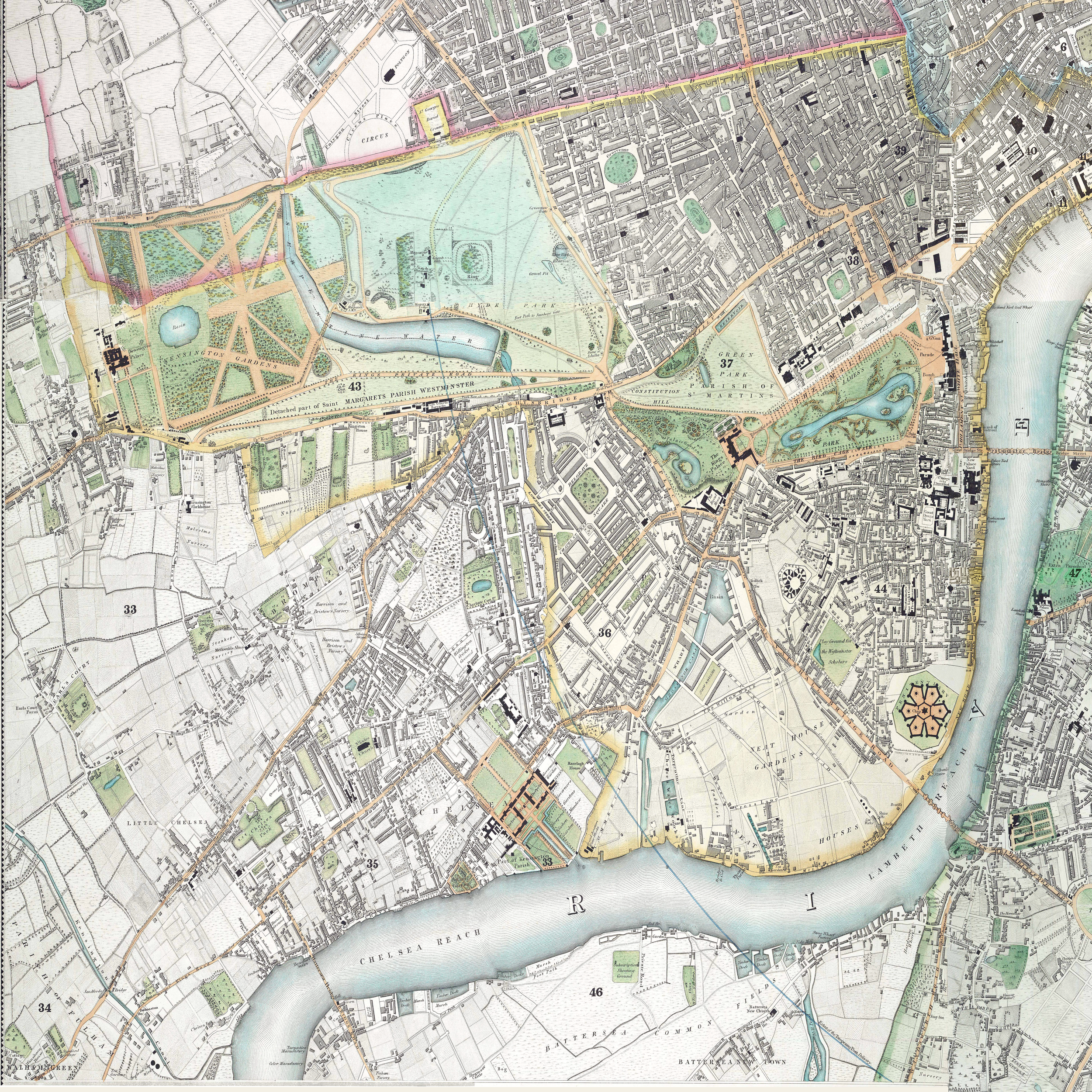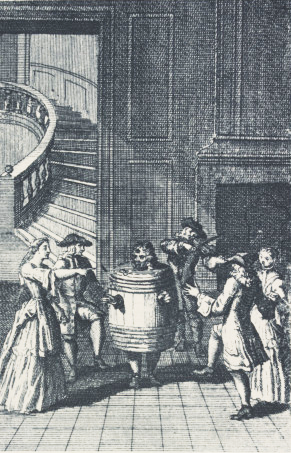
Restoration comedy is English comedy written and performed in the Restoration period of 1660–1710. Comedy of manners is used as a synonym for this. After public stage performances were banned for 18 years by the Puritan regime, reopening of the theatres in 1660 marked a renaissance of English drama. Sexually explicit language was encouraged by King Charles II (1660–1685) personally and by the rakish style of his court. Historian George Norman Clark argues:
The best-known fact about the Restoration drama is that it is immoral. The dramatists did not criticize the accepted morality about gambling, drink, love, and pleasure generally, or try, like the dramatists of our own time, to work out their own view of character and conduct. What they did was, according to their respective inclinations, to mock at all restraints. Some were gross, others delicately improper.... The dramatists did not merely say anything they liked: they also intended to glory in it and to shock those who did not like it.

Sir William Davenant, also spelled D'Avenant, was an English poet and playwright. Along with Thomas Killigrew, Davenant was one of the rare figures in English Renaissance theatre whose career spanned both the Caroline and Restoration eras and who was active both before and after the English Civil War and during the Interregnum.

The Royal Opera House (ROH) is a historic opera house and major performing arts venue in Covent Garden, central London. The large building is often referred to as simply Covent Garden, after a previous use of the site. It is the home of The Royal Opera, The Royal Ballet, and the Orchestra of the Royal Opera House. The first theatre on the site, the Theatre Royal (1732), served primarily as a playhouse for the first hundred years of its history. In 1734, the first ballet was presented. A year later, the first season of operas, by George Frideric Handel, began. Many of his operas and oratorios were specifically written for Covent Garden and had their premieres there.
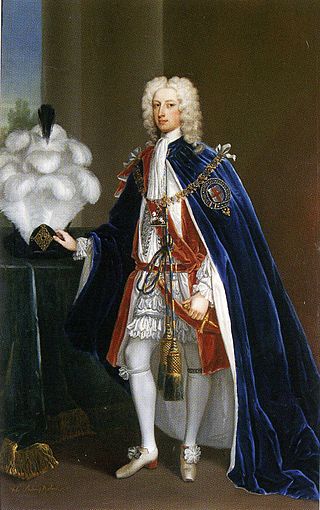
John Manners, 3rd Duke of Rutland KG PC was an English nobleman, the eldest son of John Manners, 2nd Duke of Rutland and Catherine Russell. Styled Marquess of Granby from 1711, he succeeded to the title in 1721, cutting short a brief career in the House of Commons, where he had represented Rutland as a Whig.

Thomas Betterton, the leading male actor and theatre manager during Restoration England, son of an under-cook to King Charles I, was born in London.

West End theatre is mainstream professional theatre staged in the large theatres in and near the West End of London. Along with New York City's Broadway theatre, West End theatre represents the highest level of commercial theatre in the English-speaking world. Seeing a West End show is a common tourist activity in London. Famous screen actors, British and international alike, frequently appear on the London stage.

The Theatre Royal, Drury Lane, commonly known as Drury Lane, is a West End theatre and Grade I listed building in Covent Garden, London, England. The building faces Catherine Street and backs onto Drury Lane. The present building, opened in 1812, is the most recent of four theatres that stood at the location since 1663, making it the oldest theatre site in London still in use. According to the author Peter Thomson, for its first two centuries, Drury Lane could "reasonably have claimed to be London's leading theatre". For most of that time, it was one of a handful of patent theatres, granted monopoly rights to the production of "legitimate" drama in London.
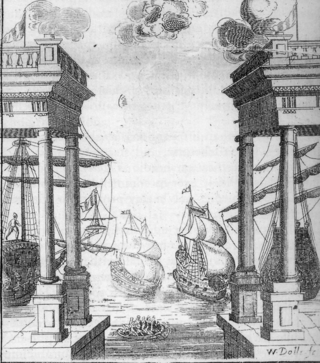
The Restoration spectacular was a type of theatre production of the late 17th-century Restoration period, defined by the amount of money, time, sets, and performers it required to be produced. Productions attracted audiences with elaborate action, acrobatics, dance, costume, scenery, illusionistic painting, trapdoors, and fireworks. Although they were popular with contemporary audiences, spectaculars have earned a reputation from theatre historians as vulgar in contrast to the witty Restoration drama.
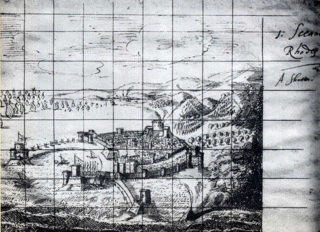
The Siege of Rhodes is an opera written to a text by the impresario William Davenant. The score is by five composers, the vocal music by Henry Lawes, Matthew Locke, and Captain Henry Cooke, and the instrumental music by Charles Coleman and George Hudson. It is considered to be the first English opera.

The patent theatres were the theatres that were licensed to perform "spoken drama" after the Restoration of Charles II as King of England, Scotland and Ireland in 1660. Other theatres were prohibited from performing such "serious" drama, but were permitted to show comedy, pantomime or melodrama. Drama was also interspersed with singing or dancing, to prevent the whole being too serious or dramatic.

The Dorset Garden Theatre in London, built in 1671, was in its early years also known as the Duke of York's Theatre, or the Duke's Theatre. In 1685, King Charles II died and his brother, the Duke of York, was crowned as James II. When the Duke became King, the theatre became the Queen's Theatre in 1685, referring to James' second wife, Mary of Modena. The name remained when William III and Mary II came to the throne in 1689.

Haddon Hall is an English light opera with music by Arthur Sullivan and a libretto by Sydney Grundy. The opera, set at the eponymous hall, dramatises the legend of Dorothy Vernon's elopement with John Manners, resetting the tale in the 17th century.

The Cockpit was a theatre in London, operating from 1616 to around 1665. It was the first theatre to be located near Drury Lane. After damage in 1617, it was named The Phoenix.

Lisle's Tennis Court was a building off Portugal Street in Lincoln's Inn Fields in London. Originally built as a real tennis court, it was used as a playhouse during two periods, 1661–1674 and 1695–1705. During the early period, the theatre was called Lincoln's Inn Fields Playhouse, also known as The Duke's Playhouse, The New Theatre or The Opera. The building was rebuilt in 1714, and used again as a theatre for a third period, 1714–1732. The tennis court theatre was the first public playhouse in London to feature the moveable scenery that would become a standard feature of Restoration theatres.
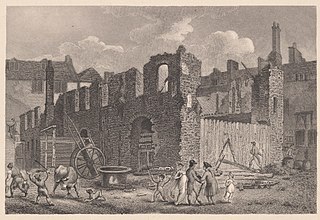
Gibbon's Tennis Court was a building off Vere Street and Clare Market, near Lincoln's Inn Fields in London, England. Originally built as a real tennis court, it was used as a playhouse from 1660 to 1663, shortly after the English Restoration. As a theatre, it has been variously called the "Theatre Royal, Vere Street", the "Vere Street Theatre", or simply "The Theatre". It was the first permanent home for Thomas Killigrew's King's Company and was the stage for some of the earliest appearances by professional actresses.

The Salisbury Court Theatre was a theatre in 17th-century London. It was in the neighbourhood of Salisbury Court, which was formerly the London residence of the Bishops of Salisbury. Salisbury Court was acquired by Richard Sackville in 1564 during the last seven years of his life when he was Chancellor of the Exchequer under Queen Elizabeth; when Thomas Sackville was created Earl of Dorset in 1604, the building was renamed Dorset House.

Thousands of performances of William Shakespeare's plays have been staged since the end of the 16th century. While Shakespeare was alive, many of his greatest plays were performed by the Lord Chamberlain's Men and King's Men acting companies at the Globe and Blackfriars Theatres. Among the actors of these original performances were Richard Burbage, Richard Cowley, and William Kempe.

The Duke's Company was a theatre company chartered by King Charles II at the start of the Restoration era, 1660. Sir William Davenant was manager of the company under the patronage of Prince James, Duke of York. During that period, theatres began to flourish again after they had been closed from the restrictions throughout the English Civil War and the Interregnum. The Duke's Company existed from 1660 to 1682, when it merged with the King's Company to form the United Company.

The United Company was a London theatre company formed in 1682 with the merger of the King's Company and the Duke's Company.
The Cruelty of the Spaniards in Peru was an innovative 1658 theatrical presentation, a hybrid entertainment or masque or "operatic show", written and produced by Sir William Davenant. The music was composed by Matthew Locke.


